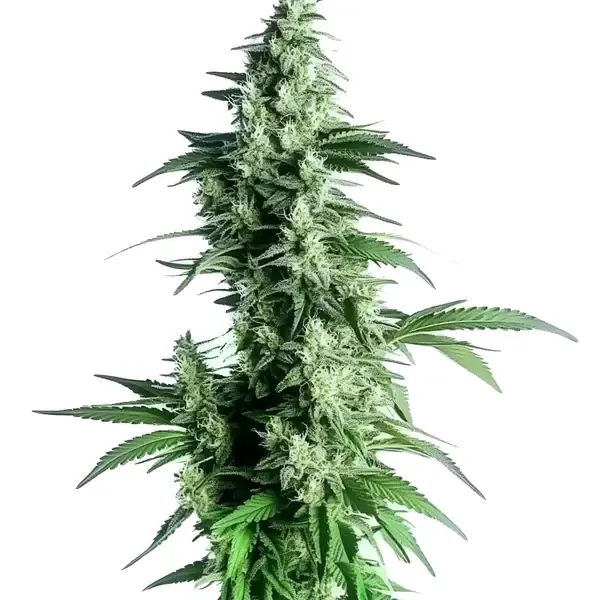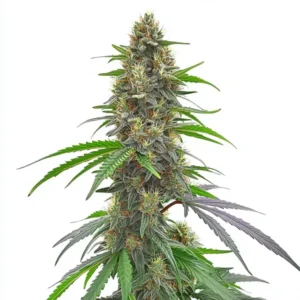

Goji Og
Lineage & Origin of Goji OG
Goji OG, born from the potent combination of Snow Lotus and Nepali OG, embodies a well-balanced hybrid profile. Its lineage brings together the best traits of both parent strains, blending robust growth patterns with a diverse cannabinoid and terpene profile. With roots in high-altitude genetics, this strain promises resilience, making it suitable for both novice and seasoned growers alike. Known for its adaptability, Goji OG thrives in various conditions, offering high yields with quality bud formation.
Notably, Goji OG’s heritage infuses it with a unique character, capturing both physical hardiness and psychoactive effects. Its strong Nepali OG influence contributes to its grounding effects, while Snow Lotus introduces a layer of cerebral uplift, crafting a strain that serves both recreational and medicinal users with equal satisfaction.
Sativa or Indica?
Goji OG leans primarily towards a hybrid profile, striking a balance between Sativa and Indica properties. This strain exhibits a unique spectrum of traits, bringing together the best of both categories. It provides a gentle, uplifting mental experience often associated with Sativas, while its physical effects lean toward the relaxation typical of Indicas.
The high from Goji OG offers a smooth progression, beginning with a light cerebral buzz that gradually transforms into a calm body relaxation. This hybrid nature makes it versatile, catering to users looking for a balanced effect without overwhelming sedation or intense energy.
Effects & Flavors of Goji OG
Goji OG is cherished for its distinctive effects and vibrant flavor profile. Users often report feeling a surge of creativity and playfulness, followed by a relaxed, giggly state. These effects make Goji OG ideal for unwinding after a long day or adding a touch of joy to social gatherings. The moderate THC levels, ranging from 14% to 20%, create a pleasant experience that’s neither overpowering nor dull, suitable for beginners and regular users alike.
In terms of flavor, Goji OG delivers a blend of berry-rich and fruity notes. Hints of cherry, strawberry, and even a subtle, tart berry essence emerge on each inhale. The taste experience is both refreshing and satisfying, leaving a pleasant aftertaste that echoes its fruity origins.
Goji OG’s flavor profile is further complemented by aromatic layers, which enhance its appeal. The fragrance of berries mixed with a slight floral undertone can elevate any setting, providing a full sensory experience for enthusiasts.
Terpenes
Goji OG’s terpene profile plays a significant role in defining its unique sensory experience. Alpha cedrene and alpha-terpineol provide a grounding base, contributing to its relaxing effects. These terpenes are often associated with stress relief, making Goji OG an excellent choice for users seeking calm.
Borneol and camphene bring earthy and woodsy notes, adding depth to the strain’s flavor. The presence of citral and delta-limonene adds citrus hints, lifting the overall aroma and complementing its fruity flavors.
Other notable terpenes include linalool, nerolidol, and orange terpenes, which lend a slight floral, herbal, and sweet orange zest to the mix. These elements not only enhance the taste but also support its therapeutic effects, particularly in promoting relaxation and stress relief.
Conditions for Germination of Goji OG
For optimal germination, Goji OG seeds require a warm and moist environment. A temperature range of 70-80°F is ideal, providing the necessary warmth to encourage healthy sprouting. Seeds should be kept in a well-drained medium with high humidity, ensuring they receive sufficient moisture without risking waterlogging.
It’s advisable to maintain a dark, undisturbed space during the germination phase. Consistent moisture is key, as dehydration at this stage can hinder growth. Ensuring these conditions allows for a robust start, setting the stage for Goji OG’s vigorous growth.
Flowering Time
The flowering period for Goji OG typically spans 8 to 10 weeks. This relatively short flowering time is advantageous for cultivators looking for efficient harvest cycles. As buds mature, they develop a rich coating of trichomes, indicative of Goji OG’s potency and high terpene content.
Towards the end of the flowering phase, the plant’s fruity aroma intensifies, signaling peak ripeness. During this time, maintaining a stable environment with controlled light exposure and humidity will help maximize resin production and bud density.
Indoor and Outdoor Growing Conditions
Goji OG can be cultivated successfully both indoors and outdoors, offering flexibility to growers. Indoors, it reaches a manageable height of approximately 4.92 feet, making it suitable for limited spaces. With the right conditions, indoor growers can expect a yield of around 1.97 oz/ft² or 600 grams per square meter. Ensuring proper ventilation and lighting optimizes growth and maintains plant health.
Outdoors, Goji OG flourishes under natural sunlight and reaches impressive yields, between 21 and 28 ounces per plant (600-800 grams per plant). It thrives in temperate climates and benefits from moderate humidity levels. Regular pruning can enhance light penetration and airflow, promoting better bud development and minimizing the risk of mold.
For optimal results, outdoor growers should monitor weather conditions, as extreme temperatures may impact plant health. When cultivated with care, Goji OG produces abundant, resinous buds that embody the unique qualities of its lineage.
Seed Bank: Blimburn Seeds
Type of seed: Feminized
Reviews
There are no reviews yet. Be the first one to write one.
Write a review
Related products







